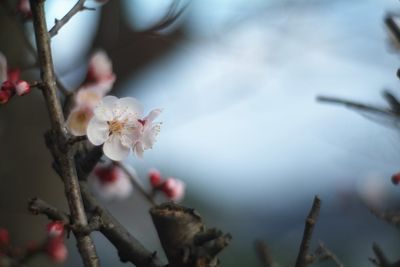What is a Japanese Apricot?
Japanese apricot trees are ornamental trees with many features. Their scientific name is Prunus mume, and they are native to Korea. Varieties of this tree include:
‘Benishidare’
‘Bonita’
‘Peggy Clarke’
‘Alba’
They can be 12 to 20 feet (4-6 m.) tall with a spread of 15 to 20 feet (4.5-6 m.) wide. Japanese apricot trees have a round shaped crown of leaves with a serrate margin, alternate arrangement, and a leaf blade of 2 to 4 inches (5-10 cm.) in length. Its most recognized ornamental feature, however, is the fragrant winter-blooming flowers that come in different colors. This ornamental fruit tree, also known as Japanese flowering apricot, blooms in white, pink, or red flowers which are extremely fragrant – like spicy-sweet cloves. The apricot-like fruit is round and yellow, 1 to 3 inches (2.5-8 cm.) in diameter, and attracts birds. While edible, it is sour with thin flesh but is prized in Asia as a pickled fruit. Although they are native to Asia, Japanese apricot trees grow hardy in zones 6 through 8 in the United States. They provide aesthetics in parking lots and median strips on highways, as well as the home landscape.
How to Grow Japanese Apricot
There are various methods for growing Japanese apricot trees, with seeds and grafting most common. Seeds of ripened apricot fruit can be propagated. Stratification of the seeds involves keeping them in mixtures of sand and sphagnum moss in the refrigerator for three months. After the seed stratification, they can be sown outdoors in the spring season. Grafting by T or chip-budding is another option to consider when cultivating these trees.
Japanese Apricot Tree Care
Japanese apricot tree care is vital to the growth of the tree. The trees grow best in well drained, fertile, acidic soils with extra organic matter. Care also involves planting in full sun; if it is grown in shade, it can hinder the development of its blossoms. Pruning Japanese apricot trees also helps with optimum flowering. Knowing and preventing infestation of the pests to Japanese apricots is a way of encouraging healthy trees. Aphids cause distortion of new growth. Borers attack stressed trees; apply fertilizer regularly to prevent attacks. Tent caterpillars create large webs in trees and then eat the leaves.
